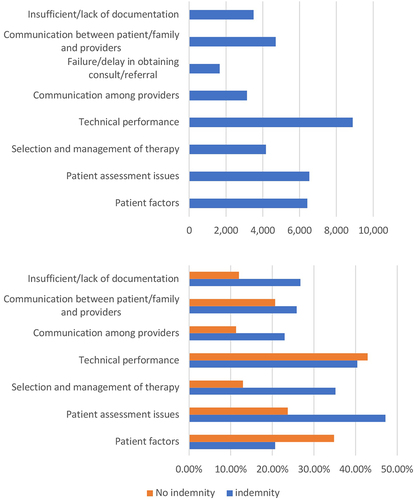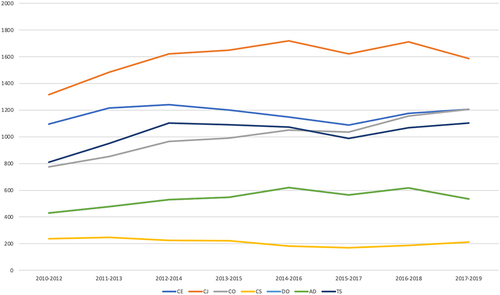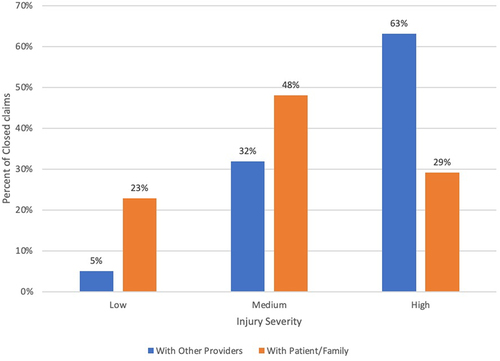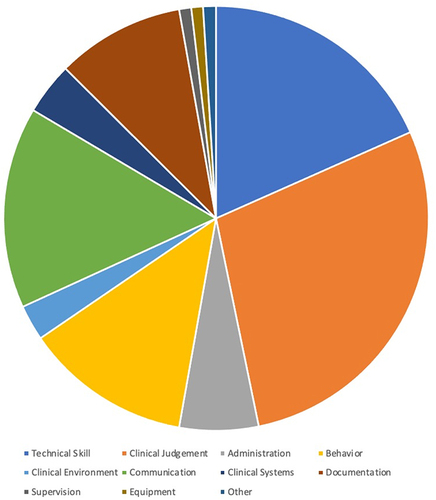Figures & data
Figure 2 Contributing factors associated with closed claims (total and with and without indemnity) (Top) Individual contributing factors with a frequency >1500 over the 10-year study period grouped into nonclinical and clinical parameters. (Bottom) Individual contributing factors with a frequency >1500 over the 10-year study period grouped into nonclinical and clinical parameters further classified by whether the claim was associated with an indemnity payment.

Figure 3 Specific communication problems (Top) Specific characteristics of communication problems between the patient/family and healthcare provider. (Bottom) Specific characteristics of communication problems among healthcare providers.

Figure 4 Temporal trends of contributing factors during the study period (Top) Temporal trends for the five largest CRICO categories during the study period. Running three-year averages were used to minimize the impact of annual variability. Communication was the only category of contributing factors that increased throughout the study period. (Bottom) Communication between the patient and provider and among providers both increased as contributing factors throughout the study period.

Figure 5 Injury severity and communication. (Top) Communication with other providers or with patients/family stratified by injury severity. (Bottom) Specific communication problems identified as contributing factors in closed claims analysis. Communication among providers was a contributing factor in high injury claims and mainly involved failure to convey the severity of a patient’s condition.

Figure 6 Differences between surgical and nonsurgical specialties. Technical performance was a more common contributing factor for surgical specialties (p < 0.0001). When compared to surgical specialties, for nonsurgical specialties, patient assessment (p < 0.0001), failure/delay in obtaining a consult (p < 0.001), and communication among providers (p<0.01) were significantly more common.


